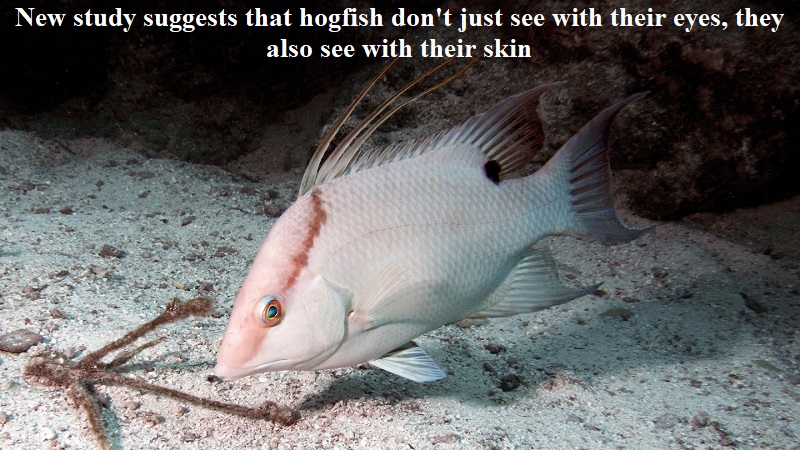
A recent study has proposed that hogfish possess a unique ability to perceive their environment not only through their eyes but also through their skin. This study, published in Nature on Tuesday (August 22), highlights that hogfish, recognized for their remarkable color-changing skin, can undergo rapid transformations from white to mottled to reddish-brown within milliseconds, allowing them to blend seamlessly with coral reefs, sand, or rocks. The phenomenon is attributed to their light-sensing skin, which effectively grants them the capacity to perceive their surroundings.
However, this extraordinary skin vision isn’t solely focused on external environments; biologist Lorian Schweikert suggests that hogfish might also employ skin vision to observe themselves. Schweikert’s curiosity was piqued a few years ago during a fishing expedition when she encountered a hogfish. Upon placing the fish onboard, she later noticed an astonishing occurrence: its skin had adapted to mimic the color and pattern of the boat’s deck. Strikingly, this camouflage persisted even after the fish’s demise, prompting Schweikert to delve deeper into the phenomenon.
In 2018, Schweikert and fellow biologist Sonke Johnsen unveiled a study that revealed the presence of a gene in hogfish responsible for a light-sensitive protein known as opsin. This protein is activated in their skin and differs from the opsin genes found in their eyes.
The most recent study, conducted by Schweikert, Johnsen, and their colleagues, delved further into hogfish skin. The researchers scrutinized skin samples from various parts of the fish’s body, examining them under a microscope. Close-up observations revealed a skin pattern resembling a pointillist painting, with each point representing a specialized chromatophore cell containing pigment granules of red, yellow, or black hues.
The granules’ movement within these cells governs the skin’s coloration. When dispersed, the color appears darker, whereas clustering results in greater transparency.
The researchers liken hogfish’s light-sensitive opsins to an internal polaroid film. This unique mechanism enables the fish to essentially capture an internal snapshot of their own skin. This sensory feedback loop empowers hogfish to continually monitor and adjust their skin coloration to align with their visual perceptions.
In essence, the study does not propose that hogfish skin serves as an additional eye, but rather, it suggests a complex sensory mechanism that permits the fish to synthesize visual input from both their eyes and their skin, allowing them to adapt and fine-tune their skin coloration to their environment.

Post Your Comments